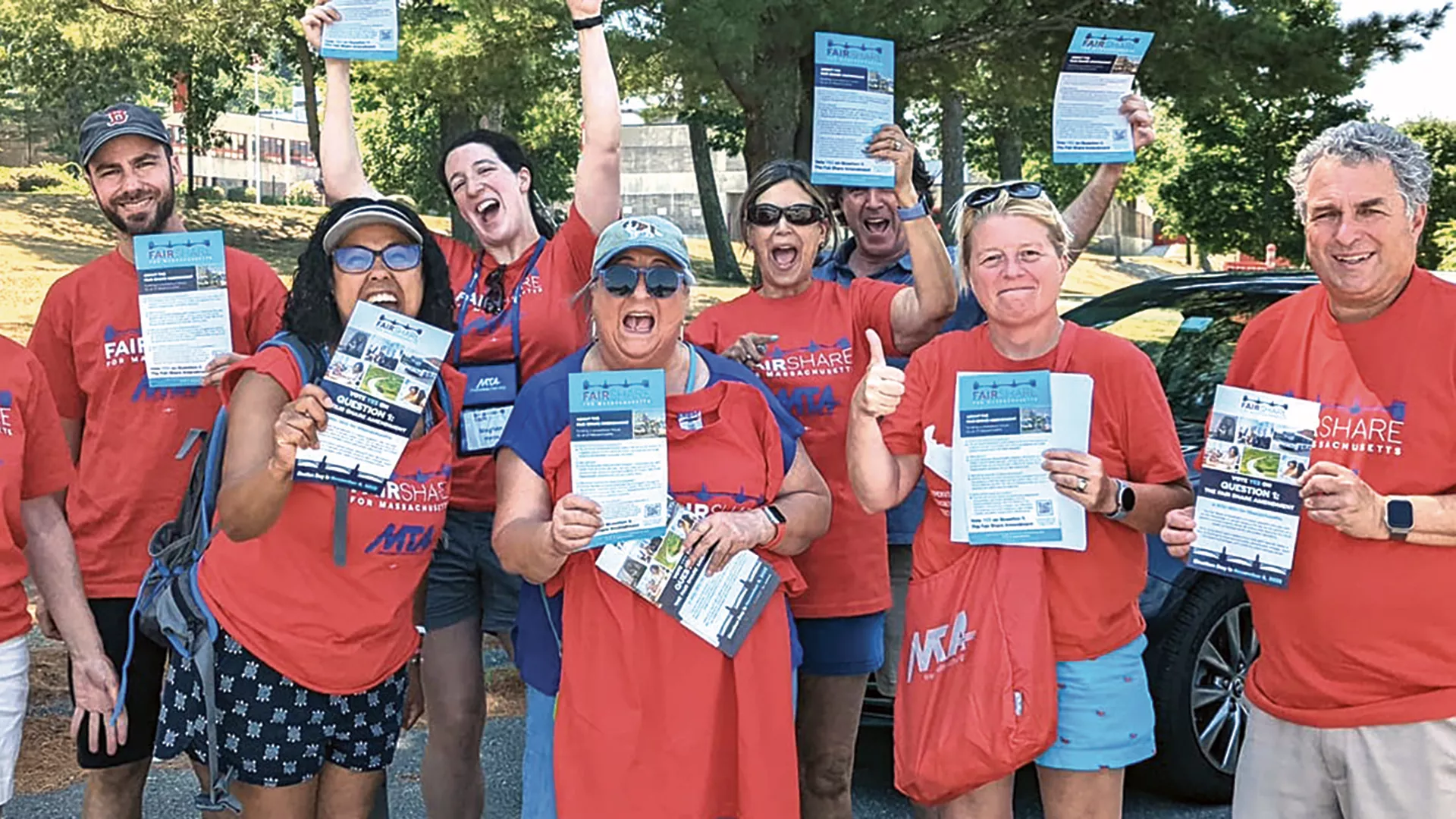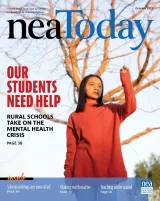In today’s divisive political climate, it’s important to remember that voters share some common priorities—including strong public schools.
Sometimes, when state legislatures fail to support what the majority of voters want, coalitions of parents, educators unions, and other advocacy groups take issues directly to voters through statewide ballot measures.
The wins have been remarkable, including billions of new dollars in education funding.
Over the past decade, voters have approved measures that uplift students and families—by raising the minimum wage and expanding Medicaid, for example.
But some legislators see ballot measures as a threat to institutional power and are trying to curtail their use, says Sarah Walker, policy director at the Ballot Initiative Strategy Center.
“It’s an authoritarian tendency when legislators ignore the majority in the service of a very extreme base,” she cautions.
Read on to discover how statewide ballot measures passed in 2022 are powering progress—and why the process is worth defending.
Ballot Measures Across the United States
Every state has different laws governing ballot measures. In some states, only the legislature can put measures on the ballot; in others, citizens can initiate laws but not constitutional amendments; and some states allow either path to direct democracy.
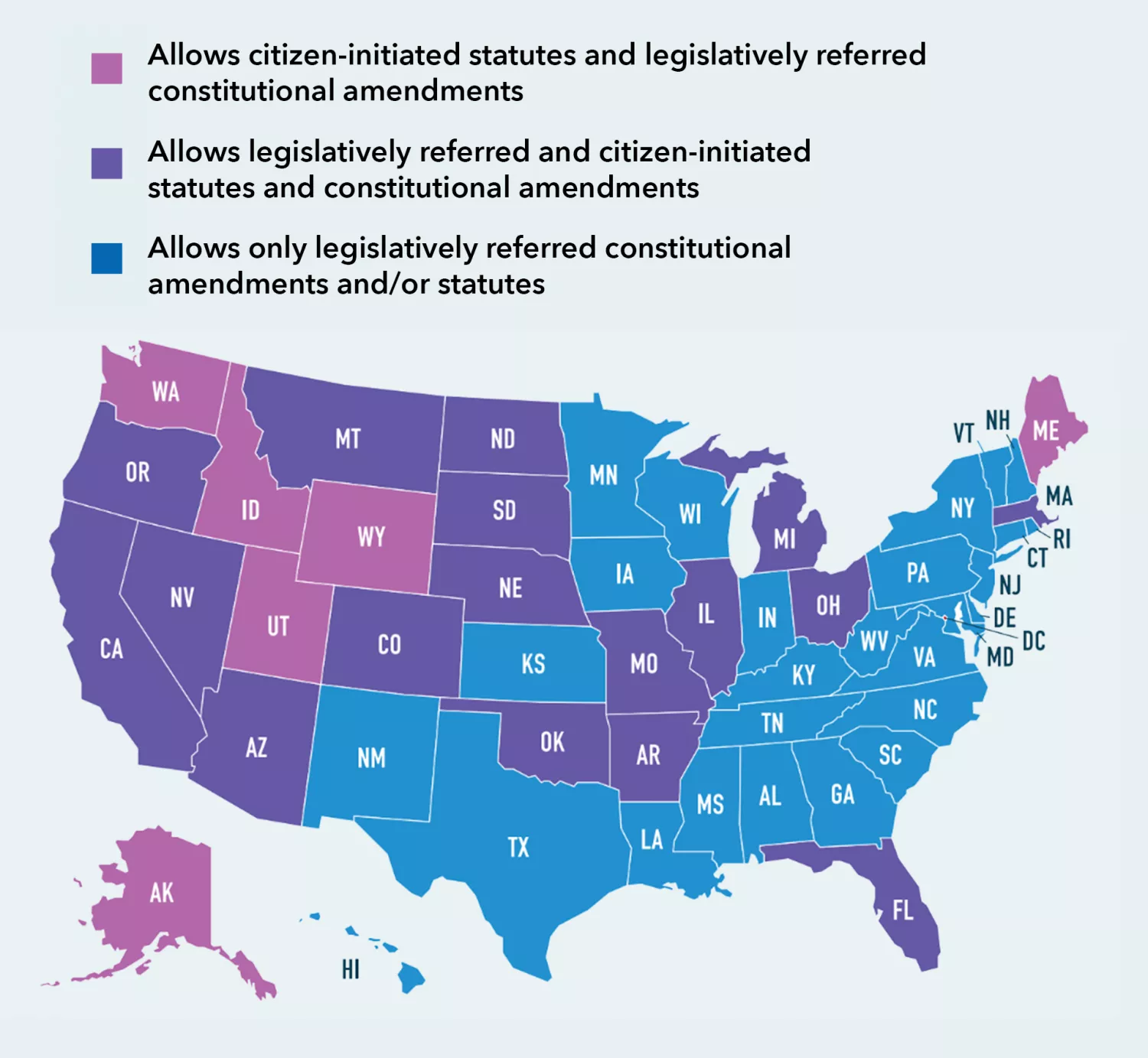
A Big Win for Tax Fairness in Massachusetts
Massachusetts educators helped accomplish a nearly impossible feat: They passed a state constitutional amendment that improves tax fairness and increases state funding for education and transportation by an estimated $2 billion annually.
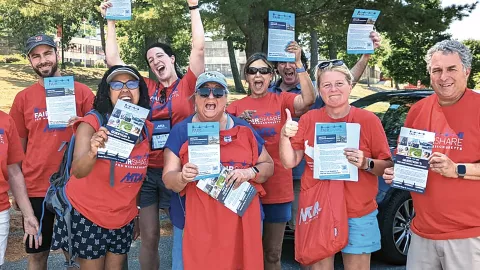
Anne Monopoli, a paraeducator from Shrewsbury, Mass., walked up to six miles each day and knocked on as many as 40 doors per day to talk with voters about Question 1, the Fair Share Amendment. It was the summer leading up to the 2022 elections, and it was worth braving the sizzling heat, Monopoli says. Most of the folks she talked with were genuinely interested to hear why the educator on their doorstep wanted them to vote for the measure.
“I explained what a boost this funding would be for our schools, and how the tax would only go into effect on their second million dollars in income,” Monopoli says. “Lots of people joked with me that they were still working on their first million.” It was a way to drive home the point that the additional 4 percent tax only applies to the ultrawealthy.
Massachusetts Teachers Association (MTA) President Max Page says the win shows that “a coalition of labor, faith, and social service organizations could go toe-to-toe with the billionaire class and win better funding for everyone.”
MTA has spent the last year ensuring that the funding is spent well. The governor recently signed off on free school meals for all students. The union is also urging funding for a nurse and librarian in each school, living wages for support staff, and paid family and medical leave for educators.
All in for Kids in New Mexico
New Mexico became the first state in the nation to create a permanent fund for child care and significantly boost early childhood and K–12 education funding, when voters approved the state’s Constitutional Amendment 1. It took a full decade of
advocacy from a sizable coalition that included NEA-New Mexico.
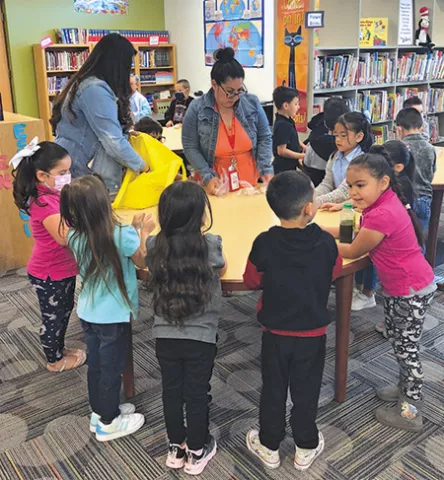
It was a decisive victory, with more than 70 percent of voters supporting the measure, which the state legislature put on the ballot.
The win represents hope for educators like Bethany Jarrell, an early childhood educator from the city of Alamogordo. She says the victory will improve the lives of future generations in immeasurable ways.
“Until very recently, our schools were massively underfunded,” Jarrell says. “We’re still rebuilding the public education system from the policies of previous administrations, and this gives us a stable source of funding to do so.”
The win is expected to add $150 million a year to early learning, and another $100 million per year to K–12 education. It ensures that lower-income families have access to early childhood education; schools can provide targeted supports to students most at risk of failing; and the school system can address the educator shortage statewide.
The measure does not raise taxes, but rather reallocates funds within the state’s Land Grant Permanent Fund, which has an estimated worth of $15.8 billion and includes leases and royalties on oil and gas production.
Direct Democracy Under Attack
In 2020, Arizona voters passed Proposition 208, a monumental ballot measure to restore nearly $1 billion in funding for K–12 schools.
For years, the state legislature had grossly underfunded public schools. Arizona was nearly last in the nation in per-pupil spending, and educators and parents were fed up with large class sizes and a lack of resources.
Educators and parents teamed up, collecting more than 250,000 signatures to place the citizen-initiated measure on the ballot. “Prop 208” passed with 51.7 percent of the vote.
However, moneyed opponents lobbied to undermine the will of the people, and the measure was eventually overturned in the Arizona Supreme Court.
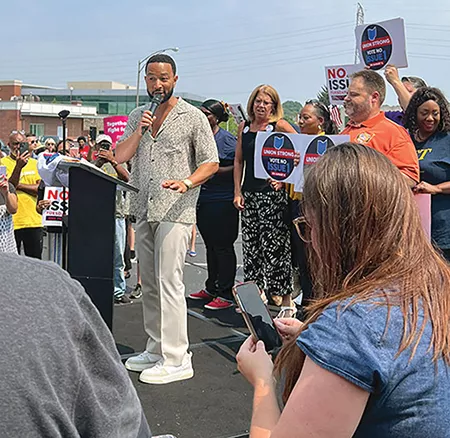
New barriers go up
Since this targeted takedown, Arizona lawmakers have made it more difficult for voters to have a say in how their money is spent. In direct response to the success of “Prop 208,” the legislature passed a measure requiring 60 percent voter approval to amend taxes.
Now these lawmakers want the 60 percent requirement for all state constitutional amendments. This change could be up for a vote in Arizona in 2024.
This trend is taking hold in other states, too
Many legislatures across the country are trying to restrain voters’ power. From 2018 to 2022, nearly 70 percent of ballot measures concerning direct democracy aimed to restrict citizens’ ability to initiate and pass measures. Over 40 percent of them passed.
Another 15 ballot measures with similar intent are likely to be on the ballot this year and next.
Next year in North Dakota, for example, voters will consider a constitutional amendment that would increase the number of signatures required for citizen-initiated amendments; require constitutional amendments to pass twice; and limit initiatives to a single subject.
Not all of these attacks have been successful
In Arkansas, voters defeated a 2022 ballot measure that would have required a supermajority to pass constitutional amendments and laws.
In Ohio, the Ohio Education Association and more than 200 other organizations rallied against the ballot measure known as Issue 1 in an August special election. The measure failed with nearly 60 percent of voters choosing “No.” The measure aimed to:
- Require 60 percent voter approval for amendments instead of a simple majority (over 50%).
- Make Ohio the only state in the country that required citizen-initiated amendments to include signatures from every county.
—Jelinda Montes
A Star-Studded Turnout for Arts Education in California
Joe Bartell is a music teacher at Brea Olinda High School, in Orange County, California. He and his wife, middle school music teacher Glenda Bartell, were both active in the coalition that helped pass Proposition 28, the Art and Music K–12 Education Funding Initiative.

Things really took off after the California Teachers Association threw its weight behind the measure and helped fund a public information campaign. Bartell was one of about a dozen music teachers throughout the state who helped draw support from other organizations and write op-eds for local newspapers and websites to educate voters.
Support from megastars like Christina Aguilera, Dr. Dre, and Katy Perry helped, too!
The measure, which passed in November, provides nearly $1 billion annually for arts and music education in pre-K–12 public schools, doubling the state’s previous spending on those programs. Targeted funding will send additional resources to low-income schools, where students have historically had the least access to arts education.
Given that arts programs were underfunded for decades, Bartell wasn’t sure he would ever see this kind of support for arts education in public schools during his career.
“Passing this measure means schools can hire educators rather than rely on one-time grants and temporary positions,” he says. “It will end inequities in access to the arts. I’m honored to have been a part of it.”
Healthy Meals Delivered in Colorado
During the dark days of the pandemic, in 2021, district officials in Jefferson County, Colorado, laid off food service workers. With fewer staff to prepare food, the district started buying more prepackaged meals, which are high in salt, saturated fat, and added sugar.
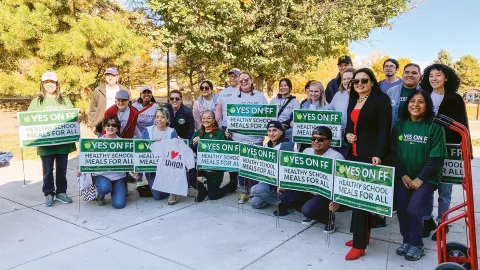
“We had carrots, but they were sad looking carrots,” says Andrea Cisneros, a kitchen manager at West Woods Elementary School.
The JeffCo Education Support Professionals Association (JESPA) filed a class action grievance and worked with Coloradans for the Common Good to demand that the district reopen kitchens and utilize buses to transport food out to the community until schools could reopen.
JESPA also joined a coalition that connected with state legislators to support the Healthy School Meals for All proposition, or Proposition FF.
Colorado voters approved the measure during the 2022 midterm elections. In addition to providing free breakfast and lunch for all Colorado public school students, the measure will generate funding to pay for cafeteria workers and provide higher quality food.
Cisneros, who has been with the school district for 23 years, helped educate voters in the community both to pass “Prop FF” and demand that the district commit to healthier meals using local food sources and culturally relevant menus.
“We realized that we have more power together … and we couldn’t have done this without the support from our parents and community,” she adds.
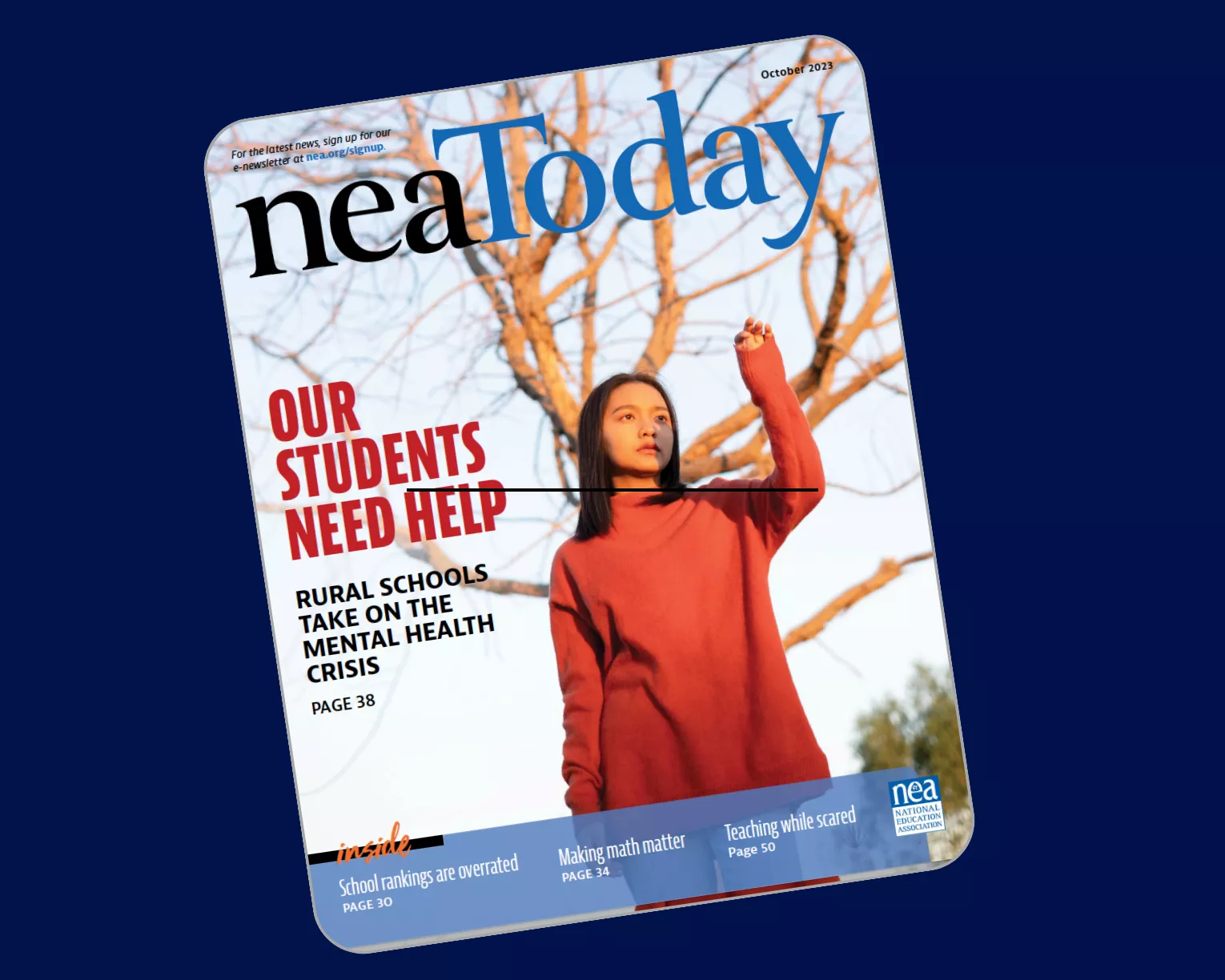
More Education News is Ready for You
Get more from


